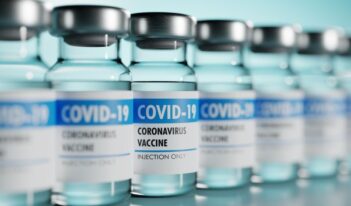
International organizations need clear principles to guide their response to public health emergencies.
Do administrative law rules and principles apply to international regulatory bodies? And if so, are those principles strong enough?
In the wake of the global coronavirus outbreak, these are vital questions to ask about the World Health Organization (WHO), an international regulatory body. In important respects, the WHO has taken on an active role in decision-making, a role that would otherwise be filled by leaders of individual nations. In doing so, the WHO relied mainly on experts rather than state leaders—drawing into question the legitimacy of the WHO’s decisions. To bolster its legitimacy, the WHO needs to refine its own internal “administrative law” to promote transparency, accountability, participation, respect for human rights, and principles of global justice, proportionality, and subsidiarity.
International leaders first learned about the coronavirus outbreak on December 31, 2019. On January 23, 2020, the WHO’s Emergency Committee recommended that the WHO declare COVID-19 an international public health emergency. The WHO’s Director-General, Tedros Adhanom Ghebreyesus, made this declaration at the end of January. At that time, there were over 7,800 confirmed cases, and 170 people had lost their lives to COVID-19.
By the time the WHO’s Director-General subsequently classified the outbreak as a pandemic in early March, more than 118,000 cases were reported in 114 countries, and nearly 4,300 people had lost their lives. Shortly thereafter, the United Nations (UN) and the WHO formed the COVID-19 Solidarity Response Fund, and the UN launched a $2 billion humanitarian response plan. By World Health Day in early April, the WHO reported over 1.2 million confirmed cases and nearly 73,000 confirmed deaths in 211 countries and territories.
In response to the crisis, the WHO has published various documents to guide countries’ strategic preparedness and response plans, as well as updates describing countries’ preparedness and response status. These publications provide guidance about health measures such as quarantining, social distancing, regulating international travelers, closing schools, and operating public transportation and workplaces.
The WHO has also responded to the outbreak with a diverse array of administrative actions. Notably, it has issued temporary recommendations, technical guidance, and daily situation reports. Through formal publications and social media messaging, the WHO addresses public authorities and engages with companies and the general public, providing travel advice, recommendations for health workers, and medical product alerts. The WHO has also taken operational action, such as deploying a rapid response team to Italy and conducting a joint mission with China to collect information.
These actions demonstrate the enormous normative and regulatory influence the WHO has on national and regional authorities, as well as individual citizens. If the WHO were a national or supranational regulatory agency, it would be governed by general principles of administrative or constitutional law. It is, however, an international organization—one of the UN’s specialized agencies, which includes almost every country in the world as a member.
The WHO’s authority to act in response to the COVID-19 crisis is provided for in what are known as the International Health Regulations. To implement these rules, the WHO cooperates and coordinates with other intergovernmental organizations and international bodies, such as UNICEF and the World Food Programme. Pursuant to its constitution, the WHO may make arrangements with international and national organizations—both governmental and non-governmental—and “with people and communities to improve their health and support their development.”
Under the International Health Regulations, member countries shall provide the WHO with information about “unusual public health events” that may become international emergencies. In reporting the detection of a pneumonia of unknown cause in Wuhan, China to the WHO and in providing subsequent situation reports, China complied with this obligation.
Based on reports from China, Thailand, Japan, Korea, and Singapore, the WHO’s Director-General believed that the virus presented a “public health emergency of international concern.” Articles 12 and 49 of the International Health Regulations empowered him to call for a meeting of the WHO’s Emergency Committee.
The Emergency Committee consists of experts that the Director-General selects. The Committee does not issue binding recommendations. Rather, the Committee presents its views to the Director-General, who then decides how to proceed.
When the Emergency Committee convened in January, it met for two days before all of its members agreed that the outbreak represented an urgent situation. It was not until a week later that the Committee unanimously agreed that the outbreak met the criteria for a public health emergency of international concern, and the Director-General issued a declaration consistent with that recommendation.
The designation of COVID-19 as a public health emergency was important because such a designation imposes obligations on WHO member countries and allows the WHO to issue temporary recommendations.
In the case of COVID-19, these recommendations included health measures to be implemented by China, the country that first experienced the viral outbreak, and by other countries to prevent the international spread of disease and avoid unnecessary interference with international traffic. Under the International Health Regulations, the WHO may recommend that its member countries implement quarantine or other health measures for suspect persons and refuse entry of unaffected persons to affected areas. Countries may request that the WHO provide technical guidance and mobilize international teams of experts for on-site assistance.
When issuing temporary recommendations, the Director-General is required to consider the views of the affected member countries and take into consideration recommendations of the Emergency Committee, scientific evidence and principles, and relevant international standards. The Director-General is not supposed to recommend measures that are more disruptive to people and international trade “than reasonably available alternatives that would achieve the appropriate level of health protection.”
The WHO’s temporary recommendations are technically non-binding, but they can “alter both the behavior of individuals and the legal obligations of states.” Member countries are responsible for implementing emergency measures without delay, in accordance with national and international law as well as the International Health Regulations. Furthermore, countries are expected to base their determinations about whether to implement recommended health measures upon specific guidance from the WHO.
The WHO’s administrative response to COVID-19 exemplifies the execution of its global emergency power. Emergency power is no longer the sole province of national governments, or even of an international assembly. The Director-General’s decisions to declare a public health emergency and issue temporary recommendations relied on the advice of scientists and experts rather than on input from national representatives.
If an international regulatory body is displacing nations as decision-makers during public health emergencies, procedural and substantive principles must govern that authority to compensate for nations yielding some of their control. These principles would include transparency, accountability, participation, proportionality, subsidiarity, respect for human rights, and the requirements of global justice. Such principles would contribute to a “rule of law” in the global space and would bolster the legitimacy of WHO’s authority to take administrative action.
It is clear from the WHO’s decision-making process that that these principles are indeed already at work within the organization. But it is also clear that further improvements are feasible and evaluation is needed. In evaluating the WHO’s decision-making procedure for designating COVID-19 a public health emergency and for making temporary recommendations, it is possible to discern some of these principles already at work.
Prior to the WHO’s emergency declaration, the Emergency Committee met for two days. The WHO published information about the members of the Emergency Committee, and noted publicly that, along with the Director-General, representatives from China, Japan, Korea, Thailand, and Singapore were present at the Committee’s meeting. The WHO also disclosed the Committee’s conclusions and advice. It announced that, when discussions concluded, some of the Committee members concluded that it was “still too early” to issue a declaration of a public health emergency. That announcement shows that the process for making an emergency declaration was not totally opaque.
Much is not published about the Emergency Committee, however, including how members are selected or its meeting agendas. The WHO has not disclosed who presented at the Emergency Committee meetings in January, nor what information each representative contributed. Furthermore, considering the two-day duration of the Committee’s discussions, the brief summary of opinions released by the WHO does not reveal much.
Proportionality and subsidiarity seem to have played an important role in the Emergency Committee’s initial discussions, as the restrictive and binary nature of declaring a public health emergency was stressed repeatedly. The Committee’s recommendations emphasized that the “WHO should consider a more nuanced system,” and that such a system “would better reflect the severity of an outbreak…and would facilitate improved international coordination.” These statements indicate the Committee’s wariness about imposing these kinds of measures.
Concerns over proportionality and subsidiarity also seem to reflect the criticism the WHO received after its responses to the Ebola virus outbreak in 2014 and the H1N1 pandemic in 2009. In the Ebola virus crisis, critics asserted that the WHO’s response strategy was too slow and deferential to regional and local authorities. In the H1N1 pandemic, however, the WHO’s “rule-bound” approach led to “worldwide overreaction.”
In evaluating the WHO’s response to the COVID-19 outbreak, we must ask: Was it a wise choice to defer to regional and local authorities after China notified the WHO about the virus?
Starting from the debated assumption that this notification was indeed prompt, it took four weeks before the Director-General declared the outbreak a public health emergency. Now that we are in the middle of the pandemic, we realize how long four weeks really can be. At the same time, of course, we should realize that we now know more than we did then.
The International Health Regulations explicitly provide that “the Director-General shall make the final determination” about recommendations from the Emergency Committee. The Director-General especially must do so when Committee recommendations are not unanimous. Although there is value in the practice of the Director-General and Emergency Committee speaking with one voice, the principle of accountability requires that the Director-General take seriously his responsibility to make and then explain decisions when presented with non-unanimous recommendations from the Emergency Committee.
The Director-General initially deemed a meeting of the Emergency Committee necessary, but then chose to wait before taking action. His decision to delay one week before designating COVID-19 a public health emergency of international concern should therefore be understood as a deliberate choice to follow the advice of some Committee members over others. This is especially evident considering the speed at which the crisis developed.
Although the International Health Regulations provide that countries must implement the WHO’s recommendations with respect for human rights and the fundamental freedoms of persons, countries should explicitly take these principles into consideration when deciding whether and how to impose temporary recommendations.
Human rights concerns primarily address how countries will implement recommended health measures. International organizations such as the Council of Europe, the Organization of American States, and Amnesty International have expressed their concerns that human rights are not always given their proper due when countries respond to and implement the WHO’s recommendations. Because the WHO’s recommendations are extremely consequential, decision-makers should deliberately and thoughtfully consider the consequences that the WHO’s recommendations may have on human rights as countries implement recommended health measures.
The WHO performs an important function in the protection of global public health, and the COVID-19 pandemic makes clear the need for an effective international body that can respond quickly in the face of public health emergencies. But such an institution also needs to be more mindful of how its actions will be perceived and should take further steps to protect important rule of law values in its decision-making. The WHO’s future effectiveness depends not only on sound expert judgment but also on the preservation of its legitimacy as an international institution.
This essay is part of an ongoing series, entitled Comparing Nations’ Responses to COVID-19.




